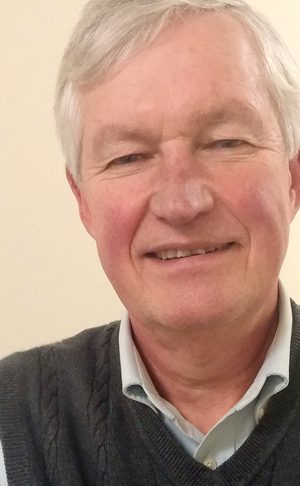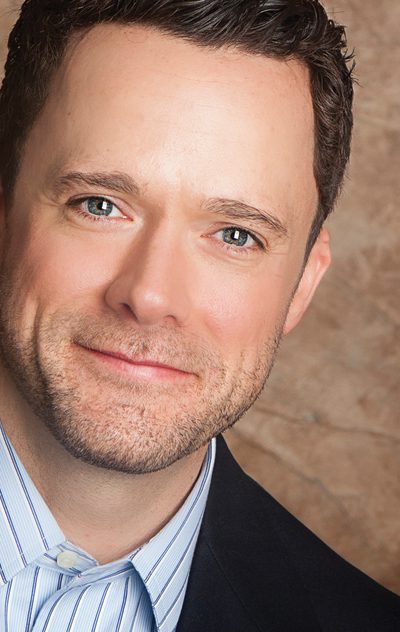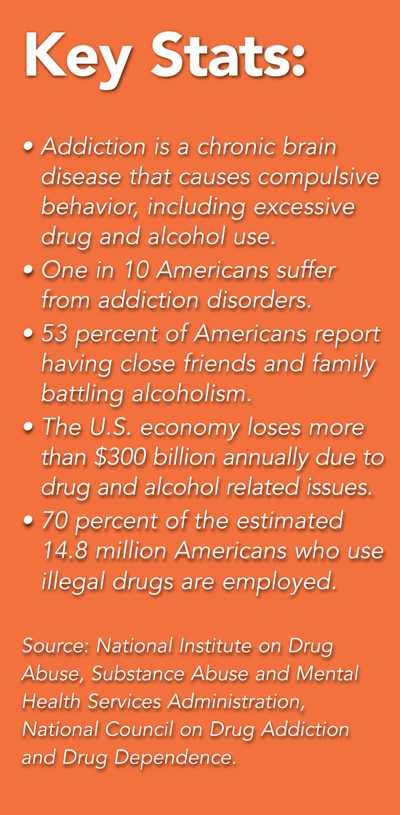
When Stuart Ray joined Guiding Light Mission in 2009 as executive director, his first order of business was to listen.

Guiding Light, an 83-year-old rescue and rehabilitation mission for men in Grand Rapids, Mich., always provided a safe place for those with substance abuse disorders seeking treatment. But it wasn’t until 2010 that the mission formalized its workforce development efforts, creating a new model that involves building relationships with the local business community.
When Ray asked his clients about their goals, there was an overwhelming message: they wanted to reengage in the workforce. But basic barriers prevented them from doing so. For many, it was as simple as access to work boots—steel toe boots are hard to come by in thrift stores—and transportation. Both issues Ray solved by providing them with the needed resources.
“All I was doing was running into the problems and addressing them,” he said. “Once we flipped the culture of the mission from woes and needs to the little engine that could, it gave people lots of hope.”
The reality is there are a lot of recovering Americans, according to Patrick Krill, director of the Legal Professionals Program at the Hazelden Betty Ford Foundation. “It’s not like addiction is selective. It’s an equal opportunity disease. It’s not uncommon to have highly skilled professionals coming though these programs,” Krill said, noting that sometimes those in high paying, high-pressure professions can be highly susceptible to the disease.
Like other mental and physical diseases, drug and alcohol addiction places a massive burden on the U.S. economy, mostly due to lost productivity in the workforce.
In 2007, the economic cost of illicit drug use totaled more than $193 billion, according to a study by the U.S. Department of Justice’s National Drug Intelligence Center. And that’s not including alcoholism, which is more common and often more socially acceptable. In 2006, the U.S. economy suffered $223.5 billion in lost productivity and other consequences of alcohol addiction, according to the Substance Abuse and Mental Health Services Administration’s (SAMHSA’s) National Survey on Drug Use and Health.
Alcoholism is so widespread that more than half (53 percent) of adults in the United States have reported that one or more of their close relatives had a drinking problem, according to the SAMHSA.
In Grand Rapids, Guiding Light Mission is one organization making an effort to get the recovering population back into the workforce.
But when Ray first started pitching the idea of creating a sort of staffing agency with clients of the mission, it wasn’t the most popular idea in the business world.
“First off, they thought we were crazy—that this population would never work,” Ray said. “But we used a circle of confidence model:—one business uses us and they like it and tell their friends. Now we’ve got people calling us.”

What makes Guiding Light successful is its sterling reputation. Men accepted into the mission must be completely dedicated to recovery, as well as contributing to everyday operations. And clients are thoroughly screened before graduating from the program and applying for jobs through the mission’s Back to Work program.
By creating a culture of reciprocity, timeliness, and drug-free living, Ray says there is a sense of community among the Guiding Light boarders.
“I don’t find this population to be takers,” he said. “I say to myself, ‘This could be me.’ I know names, I know stories, we eat together, we pray together, they banter with me. To me that’s just good client relations.”
Since the Back to Work program started in 2010, it has become increasingly popular, with more than 200 men graduating since 2012 and one of the lowest rates of recidivism in the country.
One of the first companies to use Guiding Light for a staffing solution was Design Converting, a manufacturing company in Grand Rapids. Production manager Tom Linck said working with Guiding Light made his job easier.
“What we get from the mission are reliable people, sober people,” Linck said. “It’s a win-win situation. I didn’t have to pay a hiring agency to do background checks. They’ve already done the screenings. I get reliable people, held to a standard that many people don’t often live up to.”
It’s relationships like the one Linck has with staff at Guiding Light that keep the mission’s Back to Work program successful. But Ray and his staff try not to hold their clients’ hands through the process. Once the relationships are made and their value has been established with a company, it’s up to the clients to go out and get the job.
“We act more as the stimulation,” Ray said. “We don’t make the actual connection between client and employer. We try to create a reputation and process that people feel comfortable with.”
Brian Elve, director of recovery at Guiding Light, said over the past four years very few businesses have been dissatisfied with Guiding Light hires. For the most part, the feedback is, “Keep sending them,” Elve said. He says that they have built relationships with more than 50 businesses in the Grand Rapids area.
One of the things employers have to keep in mind is that people coming out of successful rehabilitation programs have already committed to a new path.
 “Often, those in recovery exit rehab with a reignited sense of purpose,” Krill said. “They perform well at work because they are operating at their full potential.”
“Often, those in recovery exit rehab with a reignited sense of purpose,” Krill said. “They perform well at work because they are operating at their full potential.”
Still, a stigma on substance abuse disorders persists in the professional world. If it comes out in a background check that a potential hire is just exiting a recovery program, there is a looming specter of doubt.
But Krill says this is not a productive approach for either party. He says drug and alcohol addiction should be treated like any serious disease.
“With any chronic illness, it can recur,” he said. “Someone can leave chemotherapy and be fine or the cancer could come back. Addiction is a brain disease. It’s unfortunate that that
stigma lingers, as opposed to being addressed.” He also noted that the disease of addiction can manifest itself in many ways outside of drug and alcohol abuse, although those can be the most destructive.
Just like any issue in the workplace, open communication is crucial to having any success. Clearly communicated expectations between employer and employee are a must, Krill says. For instance, how often will an employee be expected to entertain and be around alcohol? Will they have to leave work early one day a week to make a meeting?
“If you go back to work and the employer and employee are working under different assumptions, that’s a recipe for disaster,” Krill said.
It helps when an employer is sensitive to the position of a recovering employee. That includes letting them know they are trusted, don’t have to overcompensate to prove themselves, and that they must prioritize their recovery. It all comes down to having a healthy workplace culture that promotes communication and sensitivity to employee needs.
While there are conflicting figures about which professions have the highest addiction rate, Krill says addiction in lawyers is roughly twice that of the general population—about 18-22 percent of those in the legal industry. But he says those numbers are dated—and experts suspect that number has grown in the 20 years since the last comprehensive study.

To put those numbers in perspective, SAMHSA data collected between 2002 and 2004 showed that of everyone reported to be suffering from addiction disorders, 17.4 percent were in the food service industry, making it the profession most populated by people with substance abuse disorders.
But numbers can be tricky and it’s important to frequently evaluate them on a large scale, Krill said. That’s why the Hazelden Betty Ford Foundation has partnered with the American Bar Association to administer a comprehensive survey to calculate the current addiction rate among legal professionals and piece together the reasons behind the numbers.
Krill said one of the reasons these figures can be inaccurate—and why the economy loses so much in productivity costs every year due to addiction—is that only a small percentage of addicts ever seek help. They keep it to themselves, something Krill chalks up to the stigma around the disease. “Part of the work we do here is tearing down those barriers and making it OK to say, ‘this is a problem.’”
Lawyers aren’t the only white-collar professionals facing a high rate of alcohol and substance abuse.
Robert Curry, founder of Turning Point For Leaders, a high profile intervention and rehab company, told TheFix.com in 2012 that the stereotype of white-collar drug use in popular culture is off the mark.
Forget whiskey and cocaine: many investment bankers are hooked on prescription pain killers, according to Curry. In fact, for those who have been in the financial industry for more than 20 years, such drug use is rampant and often unreported.
“A guy’s in his late 40s or early 50s and he gets knee surgery from a running injury, or he gets tennis elbow or he gets some teeth capped and his doctor gives him Oxycodone. Well, guess what? That feels pretty good and he keeps getting them,’” Curry said.
A 10-year study headed by a University of Southern California researcher chronicled the lives of 24 high-performing MBA graduates. The findings appeared in the Administrative Science Quarterly and detail the subjects’ increasingly destructive behavior related to alcohol and drug abuse over the decade.
That said, no profession is immune to dealing with addiction disorders within the field. How the business community approaches the disease can make a big financial impact, according to experts. To write off someone just because they have a history of substance abuse could be a big mistake.
“These are skilled people, sometimes ex-engineers fallen on hard times. They come with all different skill sets, not just manufacturing,” Linck said. “I interviewed one guy [from Guiding Light] who was way over-qualified for my jobs. They get people from all walks of life.”







